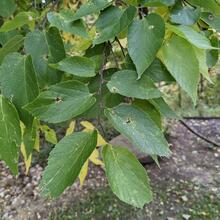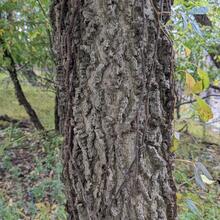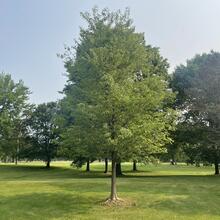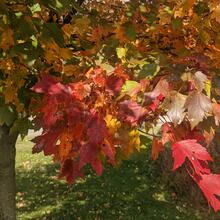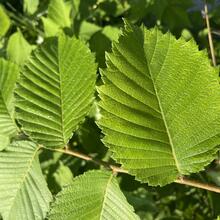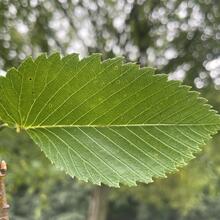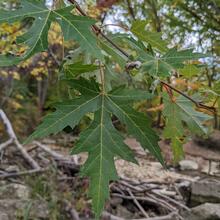Celtis occidentalis
Cannabaceae
Tolerant tree of urban conditions and restricted roots. However, rarely growing naturally in Northeast Ohio, more common on calcareous soils in the west. Edible fruits.
Summary
 Climate Tolerance
Climate Tolerance
Good
Wildlife Benefits
Fruits food source for songbirds, gamebirds, small mammals
Pollination Type
Wind
Plant Hardiness Zones
2 to 9
# Butterfly/Moths that use as host
12
Bloom Time
Spring (Apr)
 Shade/Sun Tolerance
Shade/Sun Tolerance
Full Sun to Shade: Receives less than 2 to 6 or more hours of direct sunlight
 Maximum Height
Maximum Height
Large (75-100 ft)
 Growth Rate
Growth Rate
Rapid: 2 ft or greater per year
 Soil Type
Soil Type
Clay: Small sized particles. Long moisture retention and low nutrient availability.
Loam: Equal mix of clay, sand, and silt. Moderate moisture retention and high nutrient availability.
Sand: Large/coarse particles. Short moisture retention and low nutrient availability.
Silt: Medium sized particles. Moderate moisture retention and high nutrient availability.
 Soil Moisture Tolerance
Soil Moisture Tolerance
Moist - Dry: Soil can be damp for periods of time and can retain little to no water for periods of time
Root - Fungal Association
Arbuscular mycorrhizae: Symbiotic relationship with fungi that exist on inside of plant root cells, facilitating nutrient uptake
Pest & Pathogen Risks
Low; Cosmetic-witches' broom
 Urban Stress Tolerance
Urban Stress Tolerance
High: Tree can adapt to a variety of urban conditions and will grow well
Drought Tolerance
Tolerant: Tree will not become stressed during periods of drought
Coefficient of Conservatism
4
Native Status
OH-Native: Species is native to Ohio
NatureServe G-rank
G5
Plant Community Type
- Beech Mixed: Absent
- Oak Mixed: Absent
- Alluvial: Occasional
- Red Maple Mixed: Rare
- Ruderal: Absent
- Urban Tree Cover: Common
Bloom Color
Green
Form
Tree
 Lifespan
Lifespan
Medium: 100-250 years
Soil pH
Circumneutral (pH 6.8-7.2)
Wetland Indicator Status
FAC: Facultative, occurs in wetlands and non-wetlands
Soil Compaction Tolerance
Tolerant: Tree will not become stressed from soil being compacted
Heat Tolerance
Tolerant: Tree will not become stressed for increased temperature due to urban heat island effects
Salt Tolerant
Tolerant to Salt in Soil: Tree will not become stressed when salt is present in soil
Native County Status
Cuyahoga
Lorain
Medina
Portage
Summit
IUCN Red List Assessment
Least Concern
